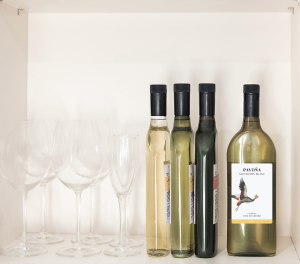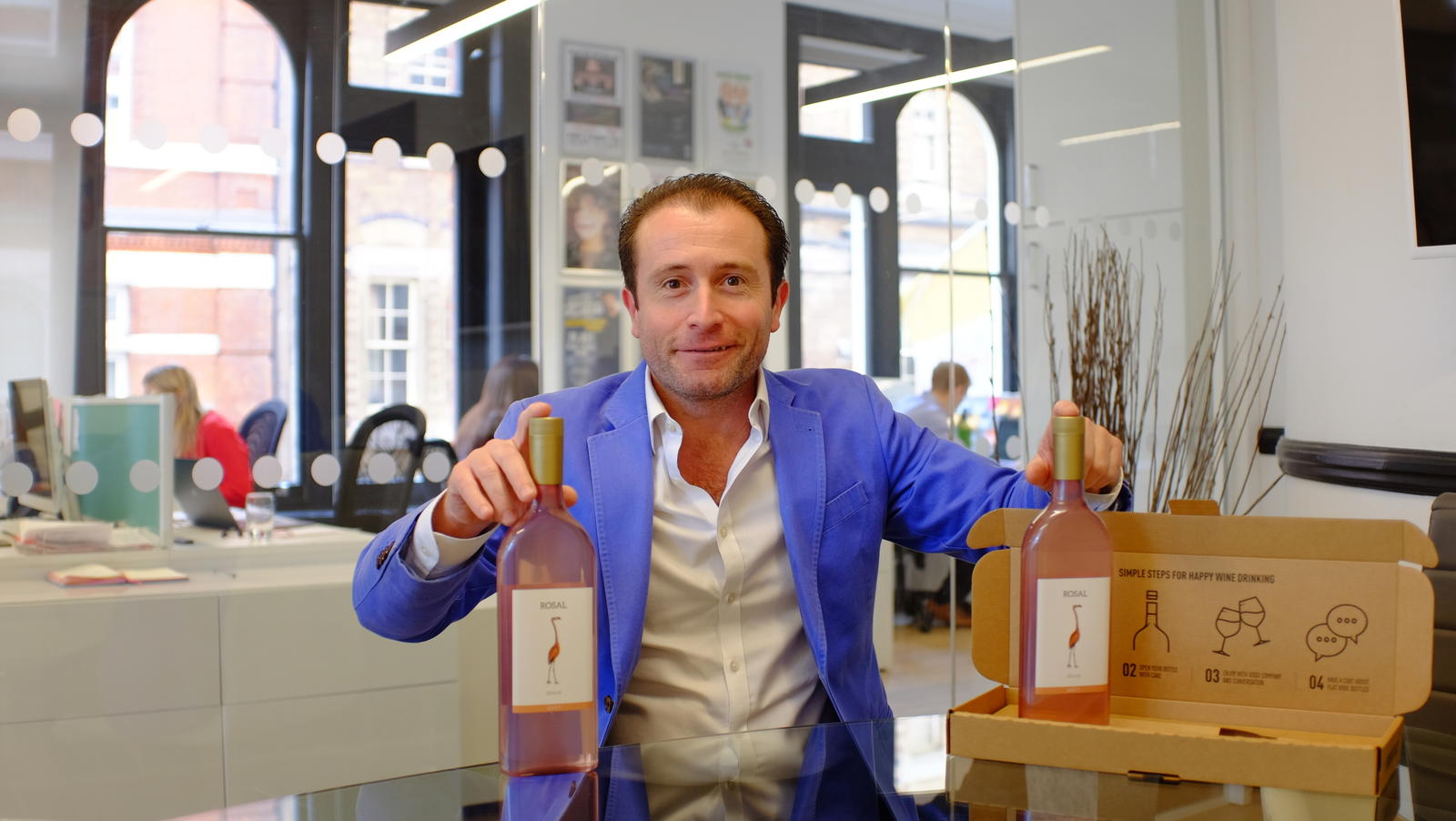We caught up with Santiago Navarro, CEO of Garçon Wines to talk all things including why traditional wine bottles are so bad for the environment to implementing their flat bottle design over a range of industries…
Tell us about Garçon Wines.
Garçon Wines are a London-based cleantech start-up, with a recently opened office in San Francisco too, on a mission to bring about the most significant advancement to wine bottles of the past two centuries. In a 21st century world of changing consumer demands, increasingly complex supply chains and, most importantly, climate crisis, the traditional round, glass wine bottle – which is a heavy, fragile and spatially inefficient 19th century technology – is causing environmental damage, holding back the industry, and therefore is, in our view, no longer fit for purpose. The wine bottle is the pivotal bit of product hardware shared by the entire wine industry and at Garçon Wines we believe that a timely hardware upgrade is required. That is what we do and why we do it.
Our multi-award-winning eco, flat wine bottle innovation respects the heritage and tradition of a round, glass wine bottle, yet through targeted and important improvements to the shape and material, our bottles are significantly more sustainable. Innovating in shape to make the bottle flat – a smart cross-section design of a Bordeaux bottle, the most popular wine bottle shape – means that the bottles are 40% spatially smaller and can be packed like books to unlock more efficient, game-changing transit cases which slashes both financial and environmental costs, therefore, carbon emissions and logistics costs. Made from 100% recycled PET – pre-existing, not single-use plastic – and fully, easily and widely recyclable after use, the bottles put pre-existing material back to good use. This helps mitigate against the material ending up as waste, and results in lower carbon emissions than both virgin PET or glass. This lightweight, wonder material means the bottles are 87% lighter than a traditional glass wine bottle, subsequently also potentially slashing hundreds of grams of CO2 per bottle across the supply chain.
Unlike other alternative wine packaging formats, such as boxes or cans, our bottles retain the emotional connection of drinking wine from a bottle that looks beautiful enough to be proudly placed on a dining table. Beyond the aesthetic beauty, it is the environmental ‘beauty’ where the maximum importance should be placed. We strongly believe that when Greta Thunberg’s generation come of drinking age, they will not opt to drink wine from a round glass bottle knowing that this vessel has such a grotesque and unnecessary carbon footprint. As a wine packaging solution for a 21st century world, our eco flat wine bottle is challenging the status quo to enable happier consumers, a wealthier industry, and most importantly, a healthier planet; a benchmark example of triple bottom line sustainability.
How did you come up with the idea for Garçon Wines?
The idea to flatten a wine bottle – flat meaning it is a smart cross-section design of a round bottle – came about in part through my experience of building my first wine business selling wine online and trying to make successful home deliveries in the UK, and specifically in the growth area of deliveries to younger consumers living busy lives in urban centres. Garçon Wines was founded as we were trying to find a way to deliver a wine bottle seamlessly into UK homes through the letterbox. The UK has over 30 million wine drinkers and they consume around 1.8 billion bottles annually. Therefore, finding a way to seamlessly deliver wine in single bottles into UK homes represented an attractive commercial opportunity.
The growth in e-commerce and the success of platforms like Amazon, together with the fact that younger shoppers are looking to receive their purchases more frequently in smaller volumes without having to wait around aimlessly all day to take receipt of a delivery, meant that we were determined to find an innovative way to make cost-effective, seamless deliveries of wine into UK homes. Flattening the bottle allowed it to fit through the majority of UK letterboxes, making it from a strong, lightweight material allowed it to be delivered by Royal Mail in minimal outer packaging, and ensuring the end product looked beautiful on a dining table would mean that it had the best chances for adoption.
We soon realised that letterbox delivery was just the tip of the iceberg for our flat wine bottle innovation. In a time when melting icebergs are a stark symbol of the damage we are doing to our fragile planet, our eco, flat bottle product hardware innovation can enact real and positive advancement. Likewise, the UK is just the tip of the iceberg in terms of the global opportunities for our game-changing bottles, which is why you can already find our bottles for sale in the Netherlands, Sweden, and Finland, and shortly also in Denmark and Norway. We are also on track to have commercial activities in France, US, and Australia in the next year.
More from Business
- How To Start A Business In Andorra
- Top Industries for Investment in Colombia
- How To Start A Business In Slovenia
- Angel Investors Vs. Venture Capitalists: What’s the Difference?
- How To Launch A Startup In Stockholm
- Crypto Clash: Bitget Vs. Bybit
- 6 VoIP Features That Improve Customer Service
- Top Industries for Investment In Egypt

Why is the traditional wine bottle so bad for the environment?
The traditional round, glass Bordeaux and Burgundy style wine bottles most commonly used today were introduced in the 19th century and remain relatively unchanged even though the way we transport and consume wine has changed drastically, as has the health of our planet which has rapidly deteriorated. These 19th century wine bottles are improvements on a 17th century British invention and so at their core they are, in fact, technology from a bygone era.
It is the wasteful fragility, unnecessary heaviness and spatial inefficiency of traditional bottles that have such damaging ramifications for our environment. This environmental damage is also mirrored by financial losses. Current wine transit cases used to transport 6 or 12 bottles of wine across the globe are inefficient and ineffective due to the fact they have to work around an inefficient primary pack of a round, glass bottle, resulting in unnecessarily costly logistics, excessive packaging, wasted resources and a grotesque carbon footprint; one Californian study for one of the world’s largest wine-producing areas shows that the glass bottle is the single largest contributor to wine’s carbon footprint from cradle to retail gate accounting for 29% of the total; adding transport and secondary packaging takes it to 51%, so more than half of all the carbon footprint, to produce and move this outdated hardware.
As an estimated 35 billion bottles of wine are consumed annually across the globe, advancement of this packaging format has the potential for significant improvement. The climate crisis is already having a massive impact on the wine industry, causing damage to the vines and terroir. This is a major problem for an industry that is pegged to specific geographic regions or appellations and for the future of an industry steeped in the tradition of handing down the bounties of the land to future generations.
There is likely to still be a place for the round, glass bottle but it will probably only be justifiable for the very small percentage of wines which would be characterised as fine wines. These benefit from ageing in bottle for many decades and are mostly enjoyed for limited special occasions or celebrations. However, the vast majority of wines that get produced, bottled and consumed in the same year or vintage need to be transported in a more planet-friendly manner to safeguard and modernise the industry. This is what we at Garçon Wines offer to our industry.
What does the future hold for Garçon Wines?
In the future, Garçon Wines will offer both products and services, across different categories and to different customers in different countries. So, we will be multi-product, multi-channel, and multinational. We have started off with wine products and packaging in the UK and are already extending our operations internationally to the Nordics, France, USA, Australia and beyond. In the near future, we are very much looking forward to our bottles becoming available for other high value to volume liquids, such as spirits, as we have secured a broad intellectual property portfolio for a range of flat bottle designs. As such, the company will soon be rebranding from Garçon Wines to something more fitting for our growing ambitions.
The consumer packaged goods space is a diverse and large one, and wine is not unique in needing a 21st century upgrade. We are presented with a unique and engaging springboard for greater advancement in sustainability which must be a top priority for modern lifestyles going forward. So, we will build a sustainable business with innovation at the core of all we do and grow to support others in becoming more sustainable. The next twenty years will be possibly the most important two decades in recent human history and we look forward to doing our part to contributing to ensure we head towards 2050 in a way that gives us the best chances for continued peaceful existence, in prosperous communities, on a healthy planet. Cheers to that!



